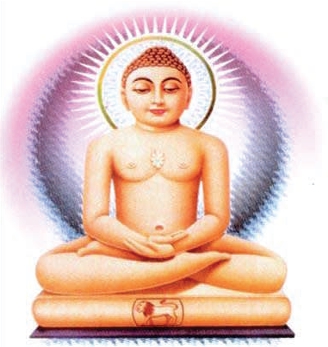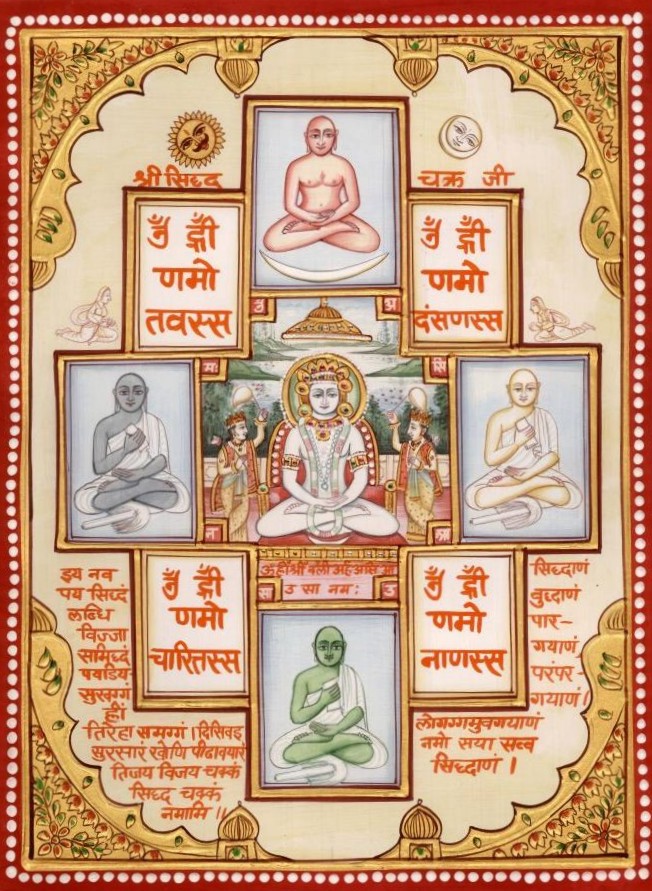
Preface
Jaina literature is a vast field and the cultural material hidden in it is of immense importance. The canon forms the earliest Jaina literature. The Jaina canon as a source of cultural history is not less significant than the Buddhist and Vedic literatures. The essence of the Jaina canon lies in the teachings of Lord Mahāvīra. The Aṅga texts form the nucleus of the entire canon.
Canonical Texts
The canonical texts are broadly divided into two groups: Aṅga-praviṣṭa and Aṅga-bāhya. The authorship of the first group is attributed to the Gaṇadharas (Principal Disciples) of Mahāvīra, whereas that of the second group is ascribed to different Sthaviras (Senior Preceptors). The credit of editing the available canon goes to Preceptor Devardhigaṇi Kṣamāśramaṇa who flourished after a thousand years of the liberation of Lord Mahāvīra.
As the Buddhist monks held three councils to recollect and systematise the preachings of Lord Buddha, the Jaina monks also held three councils to recollect, revise and redact the holy teachings of Lord Mahāvīra. The first Jaina council was held at Pātaliputra (Patna) after 160 years of the liberation of Lord Mahāvīra when the twelve years' long famine ended. The monks who assembled there could recollect only eleven Aṅgas. It was, however, not possible for them to recall the twelfth Aṅga, viz., the Dṛṣṭivāda. It was only Preceptor Bhadrabāhu who possessed knowledge of that text at that time. He could not participate in the council, as he was already engaged in some specific course of meditation in Nepal. The Council deputed Sthūlabhadra and some other monks to go to Nepal and learn the Dṛṣṭivāda from Preceptor Bhadrabāhu It was, however, only Sthūlabhadra who could acquire knowledge of the Dṛṣṭivāda. Thus, up to Preceptor Sthūlabhadra all the twelve Aṅgas could be preserved.
The second council met under the chairmanship of Preceptor Skandila at Mathurā after 825 years of the death of Lord Mahāvīra. Another similar council synchronising with the second one was held at Valabhī under the presidentship of Preceptor Nāgārjunasūri.
The third council also met at Valabhī under the chairmanship of Preceptor Devardhigaṇi Kṣamāśramaṇa after 980 (or 993) years of Lord Mahāvīra's emancipation. At this council all the canonical texts then available were systematically written down and an attempt was made to reconcile the differences pertaining to the two councils previously held at Mathurā and Valabhī.
The texts other than the Aṅgas (the Aṅga-praviṣṭa group) belong to the group known as Aṅgabāhya. This Aṅgabāhya group is classified into five sub-groups. Thus, we have in all six groups of canonical texts. They are known by the following names:
All these works are in Prakrit.

Aṅgas
The Aṅgas are twelve in number. They are as follows:
The last of these, i.e., the Dṛṣṭivāda is extinct. It had five sections:
The Ācārāṅga is divided into two sections. The first section has at present eight chapters but formerly it had nine. The second section has sixteen chapters. This Aṅga, as its very name suggests, deals with the way of life of a monk. It furnishes us with materials pertaining to the life of Lord Mahāvīra. The first section is the oldest of all the Jaina works.
The Sūtrakṛtāṅga is also divided into two sections. The first section has sixteen chapters and the second seven. This Aṅga mainly deals with the refutation of heretical doctrines.
The Sthānāṅga consists of ten chapters. Each chapter deals with objects according to their number. The first chapter starts with number 1. It goes up to 10 in the tenth chapter.
The Samavāyāṅga, too, deals with objects according to their number. Thus, it continues, in a way, the subject-matter of the Sthānāṅga. It enumerates different objects in rising numerical groups up to 1 Koṭākoṭi of Sāgaropamas.
The Vyākhyāprajñapti or Bhagavatī is divided into forty-one sections. It discusses all types of topics - philosophical, ethical, epistemological, logical, cosmological, mathematical and the like. It throws light on the lives of Lord Mahāvīra, Gośāla, Jamāli and many others.
The Jñātādharmakathā is divided into two sections. The first section has nineteen chapters. The second section consists of ten sub-divisions which are further divided into different chapters. Various narratives having a moral purpose form its subject-matter.
The Upāsakadaśā consists of ten chapters giving lives of ten principal lay-votaries (Upāsakas) of Lord Mahāvīra. The vows to be observed by a lay-votary are explained in the first chapter.
The Antakṛddaśā is divided into eight sections consisting of ten, eight, thirteen, ten, ten, sixteen, thirteen and ten chapters respectively. It gives lives of some liberated souls.
The Anuttaraupapātikadaśā is divided into three sections consisting of ten, thirteen and ten chapters respectively. It gives lives of some persons who after death were born as gods in the Anuttara celestial abodes.
The Praśnavyākaraṇa consists of ten chapters. Of them, the first five deal with Āsrava (influx of karmic matter) and the last five give an account of Saṁvara (stoppage of the influx). The available contents of this work are different from those noted in the Samavāyāṅga and the Nandīsūtra.
The Vipākaśruta is divided into two sections, each having ten narratives. The first section deals with the fruits of bad deeds, whereas the second describes those of good deeds.
Upaṅgas
The Upaṅgas are subsidiary to the Aṅgas. They are also twelve in number. Their titles are as under:
The Aupapātika describes in full the city of Campā, King Kuṇika, Queen Dhāriṇī, Lord Mahāvīra etc. This work is of special significance from the viewpoint of these splendid descriptions, as no other canonical text contains such beautiful passages.
The Rājapraśnīya describes the life of King Pradeśin and his rebirth as Sūryābhadeva. It contains a beautiful dialogue between King Pradeśin and Preceptor Keśi regarding the identity of soul and body.
The Jīvābhigama or Jīvājīvābhigama deals with the animate and inanimate entities. It contains a detailed description of continents and oceans.
The Prajñāpanā consists of thirty-six chapters. Each of these chapters deals with one particular topic in its entirety. These topics are pertaining to different aspects of Jaina philosophy.
The Sūryaprajñapti is a work on astronomy. It is divided into twenty chapters. It deals not only with the sun, as its name suggests, but also with the moon etc.
The Jambūdvīpaprajñapti is a work on cosmology. It has seven chapters. It gives a detailed description of the Jambūdvīpa continent.
The available edition of the Candraprajñapti is identical with the Sūryaprajñapti. There must have existed in olden days two separate works of the names of Sūryaprajñapti and Candraprajñapti dealing with the sun and the moon respectively.
The Nirayāvalikā or Kalpikā gives lives of King Śreṇika and his sons in ten chapters.
The Kalpāvataṁsikā also consists of ten chapters. They deal with lives of ten grandsons of King Śreṇika.
The Puṣpikā gives a description of the moon, the sun and other gods in ten chapters.
The Puṣpacūlikā also contains ten chapters. They deal with lives of goddesses Śrī, Hrī, Dhṛti etc.
The Vṛṣṇidaśā or Andhakavṛṣṇidaśā has twelve chapters describing lives of twelve princes belonging to the Vṛṣṇi lineage.
 Mohan Lal Mehta
Mohan Lal Mehta